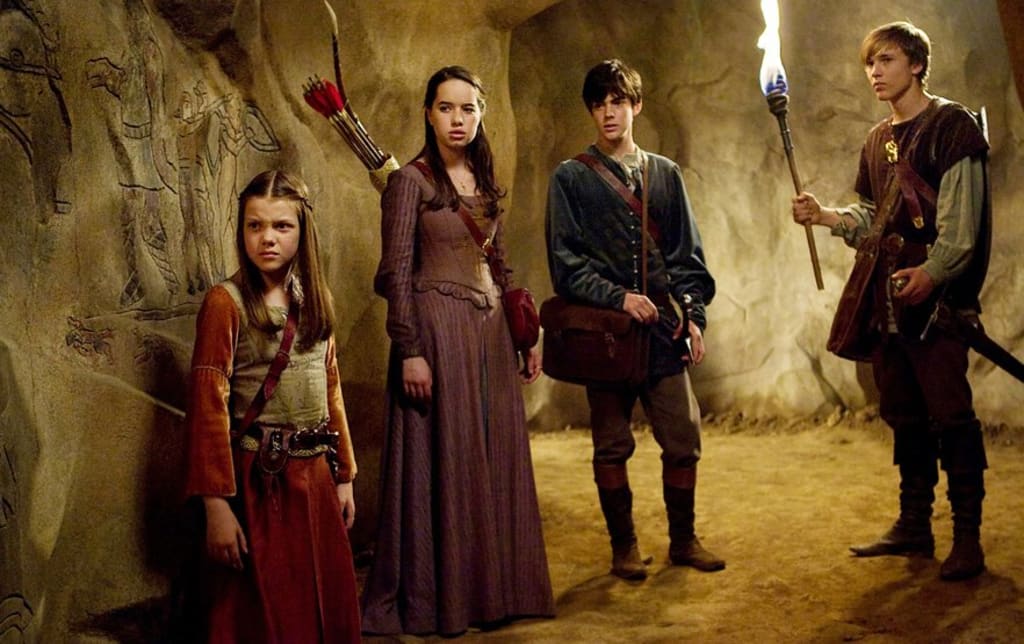
The Chronicles of Narnia holds a warm memory for most of us. For a lot of us, the books were a comfort; a bedtime story filled with adventure and wonder. But for those of us who read them as adults, they were interesting insights into theology.
The theology of Lewis’s books was unintentionally placed, as he never meant for them to become "Christian" books.
The analogies are most prevalent in the four Pevensie kids, which I will explore here.
Peter
Peter Pevensie is the oldest Pevensie child. In the books, he’s a leader for Narnia, a High King that they can depend on. I’m going to pair him up with Simon Peter, the disciple. And not just because of his name.
Simon Peter was the somewhat leader of the disciples. His name was given to him by Jesus, much like the name “Fenris-Bane” was given to Peter by Aslan. Peter was also a problematic character, denying Jesus, the Man he’s followed for a while, three times. Peter Pevensie denied Narnia until he couldn’t.
Susan
Susan Pevensie is the second oldest. In the books, she’s called "Queen Susan the Gentle." She acts as a voice of reason in the group. I akin her to Mary Magdalene. Here is the reason why:
Mary Magdalene wasn’t your good little Godly girl, no. In fact, there’s some speculation she might have been a prostitute, but more on that in a bit. Susan is Mary...but in reverse.
After her initial doubt of Narnia, she comes to love it. She comes to believe in Magic and love Aslan like her brothers and sister. But, after "Prince Caspian," Susan forgets about Narnia, even saying in her letters to Edmund and Lucy that she "does miss the games they played." She stopped believing in Narnia, and started on her own way in life. As Lewis puts it, she was "too distracted by lipstick and nylon." In the end, Susan could have had a happy ending, but after her siblings died in the train accident, that ending wasn’t so happy after all.
Edmund
Edmund Pevensie is the second youngest Pevensie kid. At first, he’s snobby, entitled, and bossy, and we hate him. Then, he’s redeemed, and he’s a much better character. This is already obvious, but I’m going to pair him up with Judas Iscariot. Here is the reason:
Judas is a controversial topic when it comes to "redeemed." Personally, I believe God forgave him, and he’s now in Heaven. But that’s not how it looked at first. Like Susan, Edmund is Judas done backwards.
At first, he betrayed Aslan, selling his own family to the White Witch for some Turkish Delight (I’ve tried it, it’s not worth it). He denied Narnia and everything to do with it. But, after he learned his lesson, he was ready to follow his brother and Aslan to the end.
Lucy
Lucy is the youngest Pevensie. She’s also known as "Queen Lucy the Valiant." Lucy, to me, represents innocence. She believed in Aslan like a child, ready to accept this new world.
The Bible says to have faith like a child—be ready to accept anything.
From the moment Lucy stepped into the snow of Narnia and met Mr. Tumnus, she accepted that Narnia was real, just like her world, even though she couldn’t see it in her world.
In conclusion, all four children represent an aspect of believing in God:
- Peter: Leadership
- Susan: Faith
- Edmund: Loyalty
- Lucy: Love
Sources:






Comments
There are no comments for this story
Be the first to respond and start the conversation.